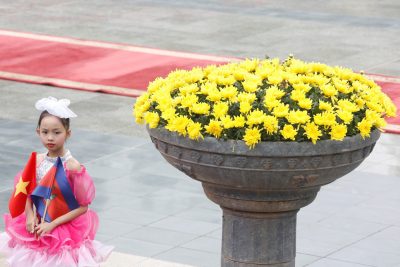Cambodia–Vietnam ties turn 50
This year marks 50 years of diplomatic relations between Cambodia and Vietnam. Both countries have organised a series of events to commemorate their time-honoured traditional friendship that is bound by strategic convergence, common vision and shared interests.
Over the past fifty years, the relationship ebbed and flowed with changing geopolitics and domestic politics in both countries before settling since 1979. Yet anti-Vietnamese sentiment in Cambodia — mainly driven by domestic politics — has constrained both countries from deepening their strategic partnership.

Cambodia’s opposition party tends to use ‘Vietnam threat’ rhetoric to gain popular support. In an attempt to delegitimise the governing Cambodian People’s Party (CPP) ahead of the upcoming elections, former president of the opposition Cambodia National Rescue Party has posted a series of short video clips explaining the roots of the CPP and its connections with the communist party of Vietnam. But Cambodian voters are increasingly concerned about their livelihood, social justice, good governance, human rights and environmental protection much more than the Vietnam factor.
There is political cost attached to strengthening bilateral relations with Hanoi, including potentially losing votes to the opposition. Despite this, the long-ruling CPP remains committed to maintaining and enhancing the Vietnam relationship for the sake of national and regional peace and development.
It is clear that Cambodia is unable to enjoy peace and development without having good and stable relations with its immediate neighbours. Both countries understand that without sticking together under the ASEAN umbrella, their regional role and leverage will be weakened. As a result, Cambodia and Vietnam’s foreign policies have both focused on regional integration and community-building.
Cambodia and Vietnam also share the concern that rivalry between major powers is threatening regional peace and stability. Learning from their Cold War experience, they must stay united to survive and thrive.
In early 2017, Vietnam’s Prime Minister Nguyen Xuan Phuc visited Cambodia three times, including to attend the ground-breaking opening ceremony of Chrey Thom–Long Binh Bridge (connecting Cambodia and Vietnam), pay an official state visit and attend the World Economic Forum on ASEAN. Cambodia’s Prime Minister Hun Sen is planning to visit Vietnam later this month to commemorate 40th anniversary of his struggle against the Khmer Rouge regime. Such frequent high-level bilateral talks significantly contribute to nurturing political and personal trust, which are the foundations of the relationship.
Early in 2017 at the 4th Meeting on Cooperation and Development among the Border Provinces, both countries’ deputy prime ministers underscored the need to develop the Vietnam–Cambodia border area. They agreed to modernise infrastructure facilities, promote trade, investment, services and tourism and build border economic zones and markets.
Vietnam is now the fifth largest investor in Cambodia after China, South Korea, the European Union and Malaysia — it has invested in 183 projects with an aggregate value of US$2.86 billion. The investment projects target rubber plantations, telecommunications and banking. Vietnam is also Cambodia’s third largest trading partner with about US$3 billion over the last few years. They aim to achieve a US$5 billion trade volume in coming years. The planned construction of 116 warehouses at strategic border crossings between Vietnam, Cambodia and Laos — expected to be completed by 2035 — will improve trade flow between the two countries.
People-to-people connectivity between Vietnam and Cambodia has been markedly strengthened over the years. There are currently more than 400 Cambodian students pursuing their higher education at various universities and institutions in Vietnam. And Vietnamese are the largest group of tourists to Cambodia, accounting for 19 per cent of all visitors.
Looking ahead to the next fifty years, Cambodia–Vietnam relations will evolve in tandem with the speed of ASEAN community building. ASEAN provides institutional and diplomatic leverage for its member states to strategically manoeuvre and collectively hedge against major powers to minimise risks while maximising interests where possible. Collectively advocating for a rules-based regional order will help smaller countries like Cambodia and Vietnam to protect their legitimate interests.
To reduce ‘Vietnam threat’ perceptions in Cambodia, both countries need to promote engagement at all levels. Right now there is a lack of academic or intellectual dialogue between the two countries. Exchange programs among students, youth leaders, future leaders and community leaders need to be further promoted. Political parties in Cambodia should not use Vietnam for their own political gains — such a strategy is obsolete and does not fit into the evolving dynamics of ASEAN regionalism.
Differences over the management of the Mekong River and the South China Sea dispute need to be resolved the ASEAN way — through consultation and consensus. Cambodia and Vietnam might have different views on these complex issues, but they need to respect each other’s national interest and position without harming bilateral friendship and ASEAN unity.
Vannarith Chheang is a Visiting Fellow at ISEAS-Yusof Ishak Institute in Singapore.


No comments:
Post a Comment